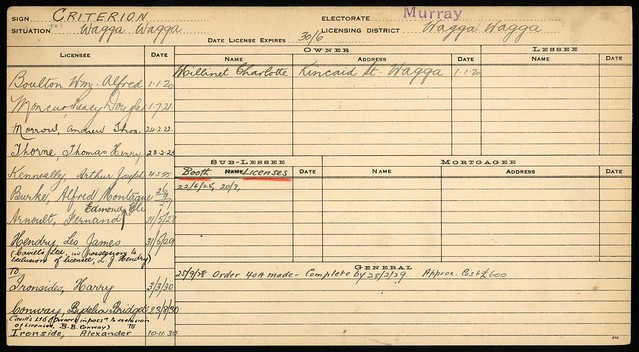This post goes through the general idea of an index, why a card index might be useful, and some examples of a card index being used. Card index systems are largely a thing of the past, but they still come up from time in archives and libraries around the world.
What is an index?
An index is a lookup of words, concepts or items in another body of work. Examples include names in a contact list, customers, topics in a book, or files in storage.
The whole point of an index is to make it easier to find what you are looking for.
Rather than needing to flick through every page in a book to find the topic you are looking for you can just go to the alphabetically sorted index, find the topic you are looking for and jump right to the page you need.
Indexing is not free, however, and the time needed to put in to create that index in the first place. But the time invested in creating that index is repaid every time any one needs to use it.
Read about the history of card indexes
What About A Card Index?
In a book the index is fixed. If you realise there is a topic not included in the index that you would like to be there you are rather stuck. The card index brings flexibility to add, remove or reorder items as needed.
Some of the main benefits of a card index are:
- Size – an index system is typically much smaller than the raw information it represents. Think about a library filled with books compared with a cabinet of index cards showing where they can be found. You would find it much quicker to search the cards rather than walking the corridors of books.
- Flexibility- unlike an index written on a single sheet of paper, a card index system can be modified and extended as needed. If you realise that you have more references under ‘A’ than is usable, you can split the index to be more specific. With a purely paper index you would probably need to write the modified index out in full again.
Read more about how card indexes work
Card Index Examples
The following examples show some of the variation in how a card index system can be used.
A Card Index for Recipes
Say you have a collection of recipes: some you have come up with yourself, some are handed down from family, some you picked up from friends, and some are from cookbooks, magazines etc.
A common way to write down those recipes is on an index card, i.e. a roughly post-card sized piece of card. You might end up with a series of cards that look something like this:
The obvious way to store these would be in alphabetical order. But you may at some point decide to subdivide them further into, say, starter, main course and dessert.
If you had 100 recipe cards and needed to search for a particular recipe, rather than having to search through all of them you could limit your search to correct course.
Within in each category you would probably maintain the alphabetical ordering.
As you discover a new recipe you would create a new card and add it to the relevant section.
What if you realised that a recipe would be suitable for both a starter or a main course? In that case you would create an extra card that referenced the actual card with something like “See Starter: Tomato Soup”.
Another Card Index for Recipes
This example is an interesting one as it highlights the flexibility in how a card index is grouped and sorted.
The obvious approach is alphabetical, but as this image shows, it probably makes more sense to create a thematic group for your recipes and then sort alphabetically within that group.
In this case the card itself contains the information, rather than pointing to a separate source (such as books in a library card index system). The card could be amended to include the source of the recipe such as a book or website in case the chef or baker wanted further information.
Cross-references could be added if a recipe went particularly well with others.
Recipes are an example of where card indexes can still be found in the modern world. You can see many more examples of recipes on index cards here.
Licensing
The caption for this example explains that this card index is arranged alphabetically by electorate and then alphabetically by the name of the establishment.
The purpose of arranging an index in different ways is to make it quicker and easier for the searcher to find the information they are looking for. So if sorting in a particular way makes sense, then the flexibility of a card index allows it.
Accident Data
This card index example has a few interesting features. Firstly the cross-referencing: a searcher might very reasonably look for ‘collisions’, while the indexer has grouped these into ‘accidents’. Rather than returning nothing, the cross reference points the searcher to where they may find the information they are looking for.
Secondly, the cross-reference gives the heading the searcher should look for, but also an index number (18 in this case). This refers to a numerically-ordered index system which a searcher can quickly flick through to find the card they are looking for.
Finally, the ‘accidents’ card has sub-entries for each accident it refers to. These references correspond to a longer-form document with details about each individual accident.



